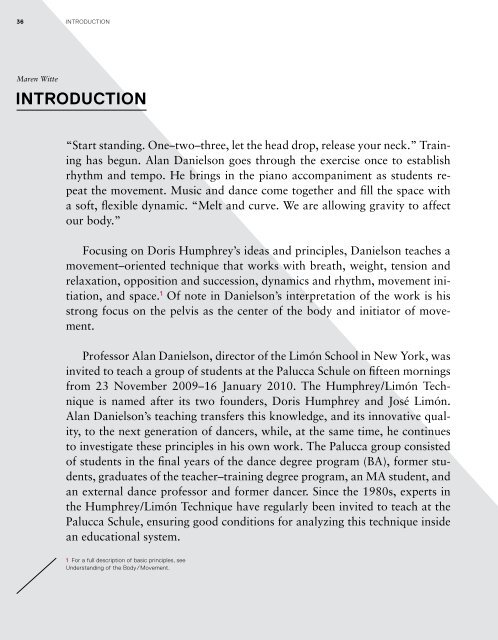Dance Techniques 2010
What does today's contemporary dance training look like? Seven research teams at well known European dance universities have tackled this question by working with and querying some of contemporary dance s most important teachers: Alan Danielson, Humphrey/Limón Tradition, Anouk van Dijk, Countertechnique, Barbara Passow, Jooss Leeder Technique, Daniel Roberts Cunningham Technique, Gill Clarke Minding Motion, Jennifer Muller Muller Technique, Lance Gries Release and Alignment Oriented Techniques. This comprehensive study includes interviews, scholarly contributions, and supplementary essays, as well as video recordings and lesson plans. It provides a comparative look into historical contexts, movement characteristics, concepts, and teaching methods. A workbook with two training DVDs for anyone involved in dance practice and theory. Ingo Diehl, Friederike Lampert (Eds.), Dance Techniques 2010 – Tanzplan Germany. With two DVDs. Berlin: Henschel 2011. ISBN 978-3-89487-689-0 (Englisch) Out of print.
What does today's contemporary dance training look like? Seven research teams at well known European dance universities have tackled this question by working with and querying some of contemporary dance s most important teachers: Alan Danielson, Humphrey/Limón Tradition, Anouk van Dijk, Countertechnique, Barbara Passow, Jooss Leeder Technique, Daniel Roberts Cunningham Technique, Gill Clarke Minding Motion, Jennifer Muller Muller Technique, Lance Gries Release and Alignment Oriented Techniques.
This comprehensive study includes interviews, scholarly contributions, and supplementary essays, as well as video recordings and lesson plans. It provides a comparative look into historical contexts, movement characteristics, concepts, and teaching methods. A workbook with two training DVDs for anyone involved in dance practice and theory.
Ingo Diehl, Friederike Lampert (Eds.), Dance Techniques 2010 – Tanzplan Germany. With two DVDs. Berlin: Henschel 2011. ISBN 978-3-89487-689-0 (Englisch) Out of print.
You also want an ePaper? Increase the reach of your titles
YUMPU automatically turns print PDFs into web optimized ePapers that Google loves.
36 Introduction<br />
Maren Witte<br />
Introduction<br />
“Start standing. One–two–three, let the head drop, release your neck.” Training<br />
has begun. Alan Danielson goes through the exercise once to establish<br />
rhythm and tempo. He brings in the piano accompaniment as students repeat<br />
the movement. Music and dance come together and fill the space with<br />
a soft, flexible dynamic. “Melt and curve. We are allowing gravity to affect<br />
our body.”<br />
Focusing on Doris Humphrey’s ideas and principles, Danielson teaches a<br />
movement–oriented technique that works with breath, weight, tension and<br />
relaxation, opposition and succession, dynamics and rhythm, movement initiation,<br />
and space. 1 Of note in Danielson’s interpretation of the work is his<br />
strong focus on the pelvis as the center of the body and initiator of movement.<br />
Professor Alan Danielson, director of the Limón School in New York, was<br />
invited to teach a group of students at the Palucca Schule on fifteen mornings<br />
from 23 November 2009–16 January <strong>2010</strong>. The Humphrey / Limón Technique<br />
is named after its two founders, Doris Humphrey and José Limón.<br />
Alan Danielson’s teaching transfers this knowledge, and its innovative quality,<br />
to the next generation of dancers, while, at the same time, he continues<br />
to investigate these principles in his own work. The Palucca group consisted<br />
of students in the final years of the dance degree program (BA), former students,<br />
graduates of the teacher–training degree program, an MA student, and<br />
an external dance professor and former dancer. Since the 1980s, experts in<br />
the Humphrey / Limón Technique have regularly been invited to teach at the<br />
Palucca Schule, ensuring good conditions for analyzing this technique inside<br />
an educational system.<br />
1 For a full description of basic principles, see<br />
Understanding of the Body / Movement.


















